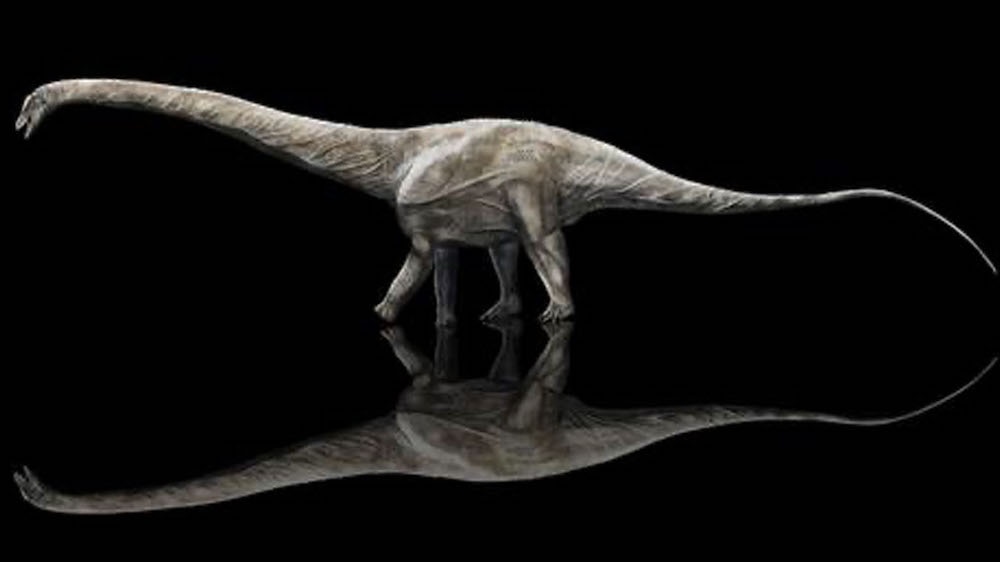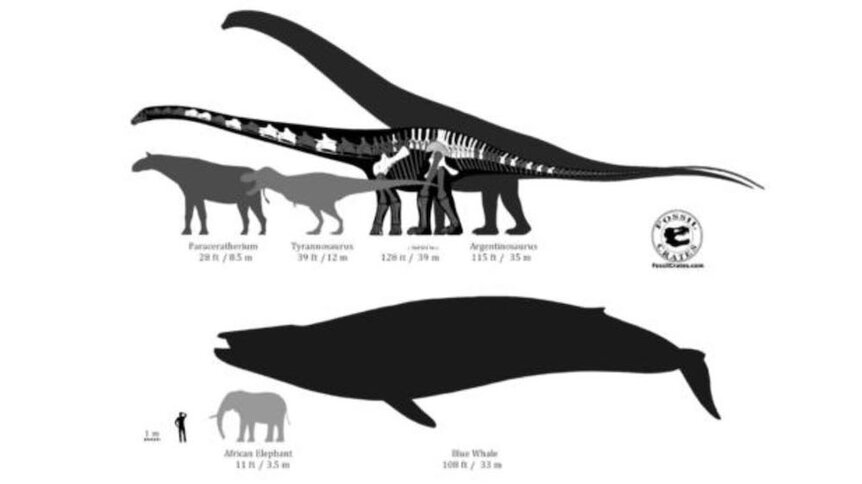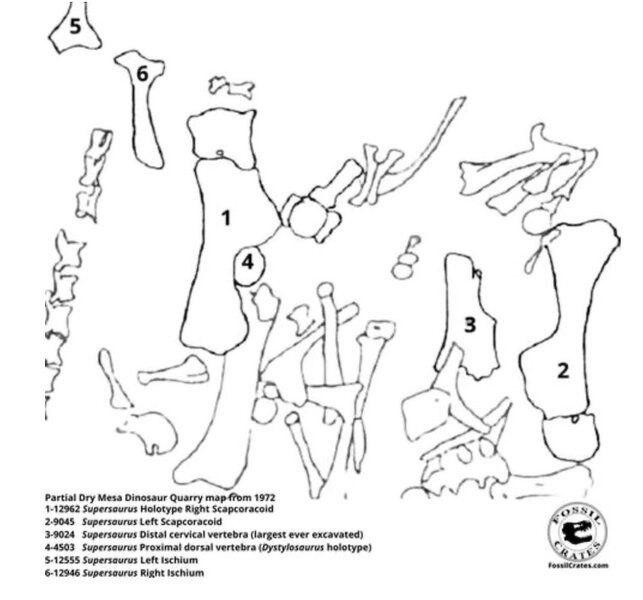Create a free profile to get unlimited access to exclusive videos, sweepstakes, and more!
Supersaurus now the longest dinosaur ever, thanks to a tail that whipped at the speed of sound
Supersaurus has now been found to have been the longest dinosaur ever, as long as half a football field.

Could anything have beat out the almost unbelievable size of the titanosuars that once shook the Earth? When it comes to length, something actually did.
Supersaurus has a name that may sound like a superhero mashed up with a dinosaur, but it has been earned. This outsized lizard has now been found to have been at least the length of half a football field (so few specimens exist that it is possible the species could have grown longer). Previous studies had underestimated its immense length, but now that the truth has emerged from the fossils, it has broken so many records that “super” is an understatement.
Now the longest dinosaur ever known, Supersaurus vivianae also had the longest shoulder blades, neck, neck bone, and tail — longer than any titanosaur. The titans only outweighed it. Paleontologist Brian Curtice recently made the discovery, published in the Society of Vertebrate Paleontology annual meetings, about this dino that easily dwarfs a T. rex.
“The bones in the tail of Supersaurus start out thick, but elongate until the last 30 feet or so, which consist of bones the size of a human's middle finger with balls on each end and about an inch of cartilage between,” Curtice told SYFY WIRE. “These act like a long chain wrapped in tight scales.”
It is possible that the creature really did have a superpower, since its tail is thought to have been able to break the speed of sound (around 767 mph). Its enormous hips were able to send a jolt of immense power all the way down to the tip of its tail, which would have resulted in the tip briefly whipping faster than Mach 1. However, that tail could have also gotten in the way sometimes. Because it would take so long for neurons to zap messages to one another until they finally reached its brain, if the tip was injured, that would take a full second to register.
The paleontologist who first gave the animal its larger-than-life moniker underestimated exactly how super it was. This was partly because one of the shoulder blades had so many cracks that rock had settled into, it appeared longer than it should have. Also, after 150 million years, you can’t expect everything to stay exactly as it was. Any bones around 8 inches in length but less than 7 inches thick were prone to getting somewhat warped over time. It didn’t help that the specimens were painted for display and therefore had all the irregularities covered up.
“The height of the neural spine of a giant dorsal (back) vertebra and a second giant dorsal vertebra from the front of the neck were misinterpreted as coming from two new and different giant dinosaurs,” Curtice said. “Those features are actually present on a number of diplodocids.”
When Supersaurus was first discovered, it was believed to be a brachiosaurid instead of the diplodocid it actually is. Both were huge dinosaurs with huge differences. Brachiosaurids supposedly stood upright rather than the natural posture of Supersaurus, which was parallel to the ground. Their necks were extremely long, but their bodies had a heavier build than diplodocids, which were longer, thinner dinosaurs whose morphology was much closer to Supersaurus. There was also a giant neck bone mistakenly attributed to Barosaurus.
You can’t really blame anyone for the Barosaurus mistake, since it was also an extremely long diplodocid. The mistaken bones were all found between a monstrous pelvis and shoulder blades which turned out to belong to Supersaurus. Every bone in that pile found at the quarry where they surfaced belonged to just one dinosaur. With this knowledge, Curtice thinks there might be specimens in museums that may also have been attributed to the wrong dinosaur. It will be easier now that scientists know what the forelimbs and hindlimb actually look like.
“We need to find 'odd' limb material about halfway between an Apatosaurus and Barosaurus,” he said. “Knowing what smaller individuals look like can tell us learn how it grew, how fast, what features developed before others, and possibly how long it took to grow to this size.”
So why did Supersaurus weigh so much less than those titanosaurs? It had air sacs that were much larger and more developed, so while it wasn’t about to leap into the sky, it was no heavyweight. But it still gets the trophy for longest dinosaur ever.




























